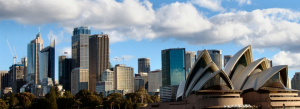
World Class Education
PISA (OECD Programme for International Student Assessment) assesses the scientific literacy, mathematical literacy and reading literacy skills of 15-year-olds. In 2012, the main focus of the testing was on scientific literacy, with almost 400 000 students being tested worldwide. In Australia, more than 14 000 students were tested in all states and territories and in government, catholic and independent schools.
PISA 2012 results indicate that Australia has a world-class education system. Only three of the 57 participating countries significantly outperformed Australia in the scientific literacy assessment: Finland, Hong Kong-China and Canada. This was similar to the result in 2003 when four of 41 participating countries significantly outperformed us. A more detailed analysis reveals that some Australian states and territories – particularly the ACT and WA – performed as well
, on average, as high-performing Hong Kong-China and Canada.
Another indicator of the world-class nature of Australia’s education system is the observation that the relationship between socioeconomic background and student achievement in Australia is weaker than the OECD average (which is a good thing!!). In the popular jargon, Australia is a ‘high quality / high equity’ country based on our PISA 2006 performance. And again, this observation is made not only in relation to scientific literacy, but also for mathematical and reading literacy.
These are all reasons to celebrate the success of school education in Australia. At 15 years of age, Australia’s students are performing well above the OECD average in key areas of learning and are outperformed by students in only a handful of other countries. PISA suggests that Australians are within striking distance of being best in the world.


Leave A Comment